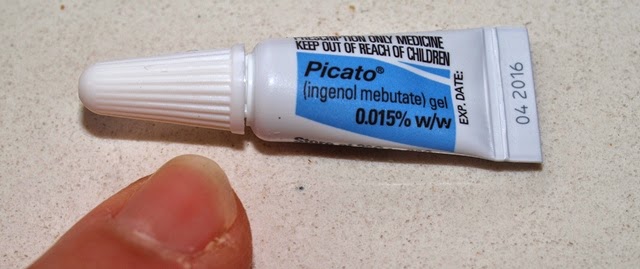Cultivating Cancer Weed
For someone who loves to tell stories about plants that change the world for the better - Cinchona (quinine), Salix (asprin), Hevea (rubber) and of course Coffea (ahhhh) - you think I'd be thrilled to discover that active chemical in the gel I smeared over my face to fix some skin blemishes was discovered in a plant.
Instead I started to doubt its efficacy. Was Picato really something to cure my latent skin cancers or was this something just to make me feel better? But then I thought about quinine and asprins, and decided it was a good thing as long as it was well tested and the extract was carefully measured. Not for me a tea made of some local weed with the hope that it might contain just the Goldilocks amount of an elixir. I don't want to be poisoned, misled or conned. And thanks to an Australian scientist, Professor Jim Aylward, and his mother, that doesn't have to be the case.
But first let's look at the plant in question, Euphorbia peplus. It's a small herb native to northern Africa, Europe and western Asia but now naturalised widely around the world, including much of southern and eastern Australia, and doing quite nicely in my backyard. It arrived in Australia shortly after European settlement and has become a common weed of gardens, paths and crops. Although well established it is generally not an aggressive invasive, except in few localised areas (e.g. it is listed as one of top 10 coastal weeds of concern in southern Western Australia).
The plant is soft and bright green, up to about 20 cm tall, with oval or spade-shaped leaves and umbrella-like clusters of green flowers or fruits at the top. The stems are usually reddish at the base. I'm sure you've pulled them out of your brick work or path at some time.
Common names include Petty Spurge or along with lots of other euphorbs, Milk Weed. It's even called by some, Cancer Weed - in a curative rather than causative sense I think - or Radium Weed. I'm presuming 'radium' again refers to its powers of good, rather than evil.
I should point out here that the plant is poisonous to us, and to many animals, and should not be ingested. Although unspecified mild doses have been used as a laxative you might keep in mind that seventeenth century herbalist Nicholas Culpeper described its action as 'working violently by vomit and stool'. And as with most euphorbs, skin contact with the milky sap can cause dermatitis.
Ironically, or not, it is the sap that has been used for centuries to cure skin problems, particularly warts. There are plenty of reports of people using sap direct from the stem to fix all kinds of blemishes and more serious ailments, and many of us have dobbed a dab of white latex from this plant onto a wart just to see what happens. Although far more expensive, I prefer and would always recommend clinically tested and precise dosages for the face.
Back to our Australian scientist, Professor Aylward. In a radio interview in 2009, he said his mother cajoled him into studying the properties of this plant after she found it successful home remedy for treating sunspots. That was in 1997 when Aylward and his team of Queensland scientists discovered and isolated the active compound in Euphorbia peplus.
Named ingenol mebute, this chemical kills rapidly dividing and growing cells, of the kind you find in a sun spot or potential cancerous cluster.
By 2009 clinical trials were in place and in 2013 the product was released for general use in the form of three tiny tubes of gel to be applied one each day for three days. After fifteen days of ruddy complexion your skin becomes blotch and cancer free, at least for a while.
Well, I did it and it seemed to work just fine. In the backyard the Euphorbia peplus thrives, no matter how many times I rip it from the garden. Presumably its toxic sap wards off other predators, and the ability to produce these flowers and fruits within weeks of germinating must help.
Images: The shots of Euphorbia peplus are all taken in my backyard, the tiny tube of Picato gel in my kitchen. The last two pictures may help you work out whether it is the paired leaves or the tucked and pleated fruits that inspired the species name, a reference to the simple peplos garment worn by women in Ancient Greece.






Comments